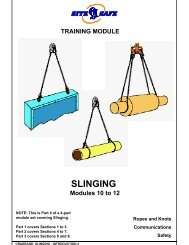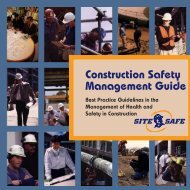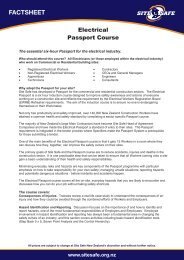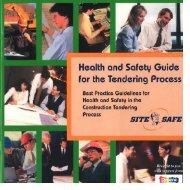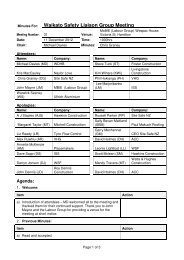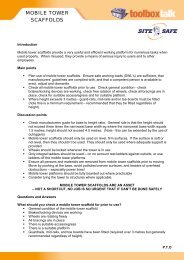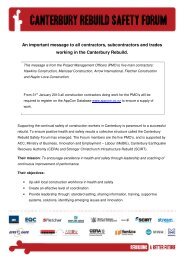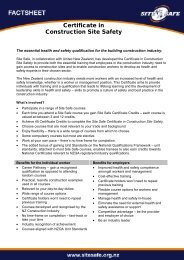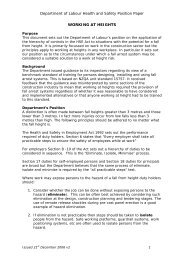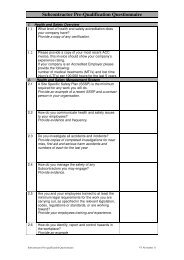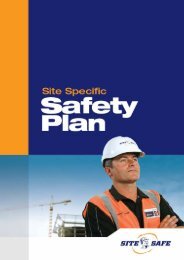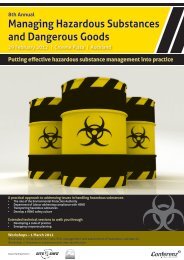SAFETY INSITE WINTER 2011 - Site Safe
SAFETY INSITE WINTER 2011 - Site Safe
SAFETY INSITE WINTER 2011 - Site Safe
Create successful ePaper yourself
Turn your PDF publications into a flip-book with our unique Google optimized e-Paper software.
PERSONAL<br />
PROTECTIVE<br />
EQUIPMENT -<br />
HARD HATS<br />
Introduction<br />
The use of occupational protective helmets, commonly known as “hard hats”, is a common means<br />
of protection from being struck by falling objects or from striking the head against a fixed or<br />
protruding object. Hard hats may also be required to protect against other hazards such as<br />
inadvertent contact with electricity, exposure to UV, weather, and extremes of temperature.<br />
For compliance with the Health and <strong>Safe</strong>ty Act 1992, the use of hard hats for protection must be<br />
considered as a means of ‘minimisation’. If no practicable means to entirely ‘eliminate’ or ‘isolate’<br />
the hazard are available then hard hats may be a practicable method to ‘minimise’ harm in<br />
conjunction other preferable hazard control methods.<br />
Main points<br />
• Hard hats may include features that enable the attachment of accessories for protection<br />
from other hazards. These could include face shields, respirators, hearing protection, and<br />
work lights/lamps. Consideration should also be given to the benefits or limitations of<br />
having ventilation openings and hi-viz colouring.<br />
• For the harness cradle to properly distribute any impact loading there must be no<br />
interference between the harness and the head. Therefore, wearing clothing items<br />
between the harness and the head (such as hoods, baseball caps, and thickly woven or<br />
heavily seamed beanies or balaclavas) is not recommended. Certain hairstyles (such as<br />
dreadlocks) may also compromise the harness performance.<br />
o <strong>Safe</strong>ty clothing distributors now offer seamless polypropylene (or similar)<br />
‘beanies’ for protection from cold that do not interfere with the harness<br />
performance.<br />
• Some styles of harness are symmetrically designed and may be fitted back to front inside<br />
the helmet to provide functional upward vision for the wearer. Care must be taken that this<br />
does not compromise the effectiveness of the hard hat.<br />
• Hard hats do not have a predetermined service life. Field tests have shown that helmet<br />
shells last for 3 years from issue date. Components of harnesses may deteriorate more<br />
rapidly in service and may need to be replaced at intervals not longer than 2 years.<br />
Discussion points<br />
• The harness cradle of the hard hat must be adjusted to comfortably fit and make for full<br />
continuous contact with head.<br />
• Chin straps can be used where hard hat security is desirable<br />
• Ensure that any attachments for protection from other hazards are compatible with the<br />
make and model of hard hat being worn.<br />
• When not in use, hard hats must be stored in a cool, dry environment away from direct<br />
sunlight, heavy or sharp objects and chemicals.<br />
• The shell of the hard hat can be weakened by exposure to paints, paint thinners, and<br />
some cleaning agents and may also reduce electrical resistance. Keep in mind that paint<br />
and stickers can also hide signs of deterioration in the hard hat shell.<br />
PTO.<br />
19




